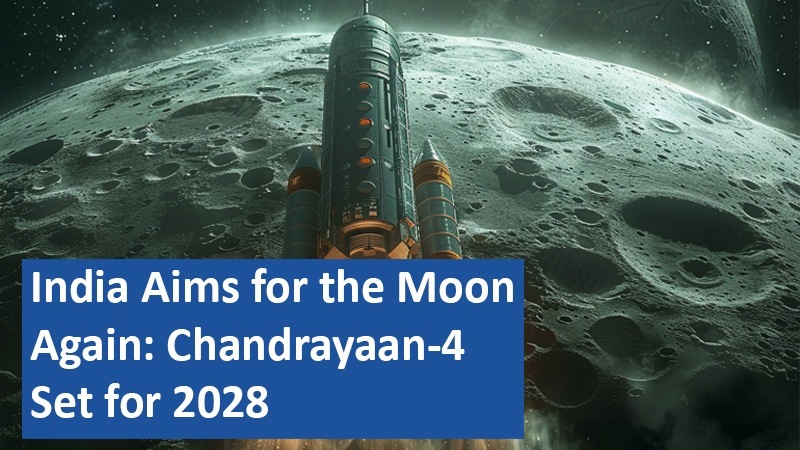India’s space program is advancing with a bold new goal: the Chandrayaan-4 mission, expected to bring back lunar samples by 2028. Led by the Indian Space Research Organisation (ISRO), this mission aims to showcase India’s growing capabilities in space exploration. ISRO Chairman S. Somanath shared details on this ambitious project during a recent address in New Delhi, marking a new chapter in India’s lunar endeavors.
By Sadie Watkins
Chandrayaan-4’s Mission Goals and Challenges

The Chandrayaan-4 mission will aim to collect about 3 kilograms (6.6 pounds) of lunar material from a region near the moon’s South Pole, believed to hold significant amounts of water ice. By doing so, India hopes to strengthen its standing in the global space landscape and invest in a sustainable space economy. The Indian government has committed 21 billion rupees (approximately €250 million) to this high-stakes endeavor. Somanath acknowledged the challenges, noting that while other countries like the United States and Russia have completed such missions in the past, replicating this feat today involves considerable expense and technical hurdles.
Complex Mission Architecture and Innovative Approaches
The Chandrayaan-4 mission will involve a complex series of components requiring two launches from ISRO’s LVM-3 rocket. The initial launch will send a lander and a sample-collecting ascender to the moon’s surface, followed by a second launch carrying a transfer module and reentry capsule that will remain in lunar orbit. Once samples are collected, the ascender will dock with the reentry capsule, allowing it to return safely to Earth. To bolster mission success, ISRO has planned a €14 million docking test called SPADEX, slated for late 2024 or early 2025, which will validate essential in-orbit procedures. For effective sample collection, ISRO is also developing specialized technology like a robotic arm and drilling tools.
Targeting a Strategic Site with Rich Scientific Potential
While the exact landing site for Chandrayaan-4 remains undecided, early discussions suggest an area near Shiv Shakti Point, the site of Chandrayaan-3’s successful landing. This South Pole region, believed to contain water ice deposits, is of great scientific interest for future space resource development, as it could supply oxygen and rocket fuel. The South Pole has attracted attention from global space agencies, with both NASA and China planning similar lunar missions to this promising area in the coming years.
Future Collaborations with Japan and Expanding Lunar Ambitions
Following Chandrayaan-4, ISRO will partner with Japan’s Aerospace Exploration Agency (JAXA) for Chandrayaan-5, also known as the Lunar Polar Exploration (LUPEX) mission. This project will feature a robust 350-kilogram (770-pound) rover provided by JAXA, advancing capabilities beyond those of Chandrayaan-3’s Pragyan rover. These missions are part of India’s broader plan to send astronauts to the moon by 2040 and, eventually, establish a permanent lunar base by 2050. For now, ISRO’s focus is on achieving the key technological advances necessary to ensure Chandrayaan-4’s success.
India’s lunar ambitions are progressing with determination and innovation. As Chairman Somanath expressed, ISRO’s team is thrilled to take on the challenge of Chandrayaan-4, bringing India closer to its goal of becoming a prominent player in space exploration.
Based on information from www.dailygalaxy.com and own research.